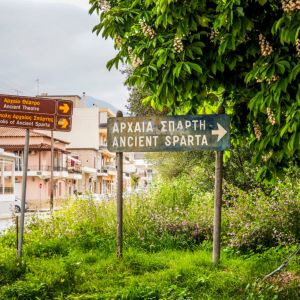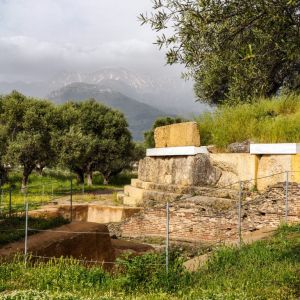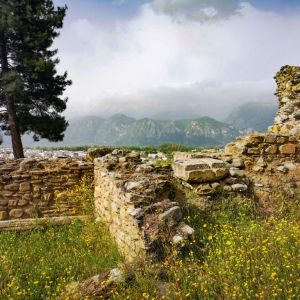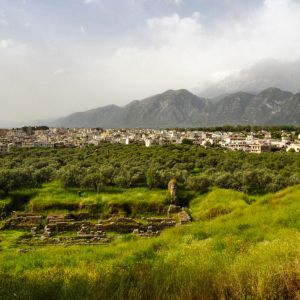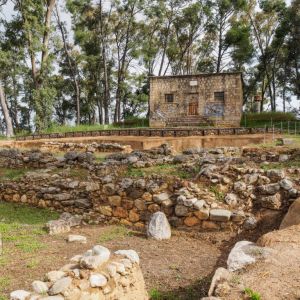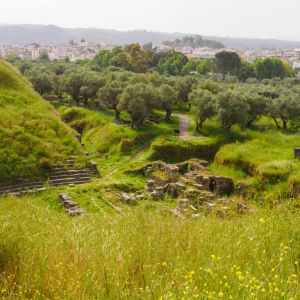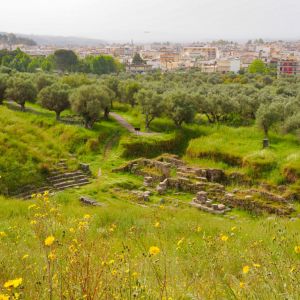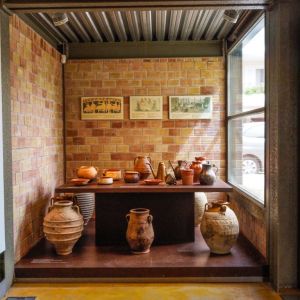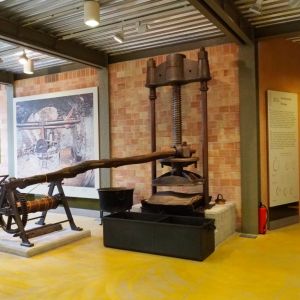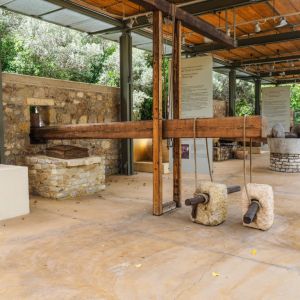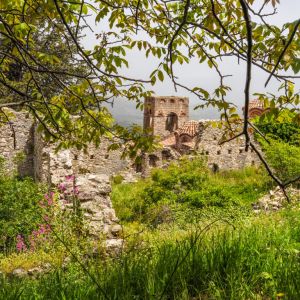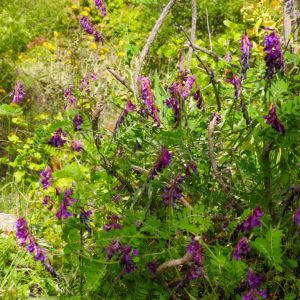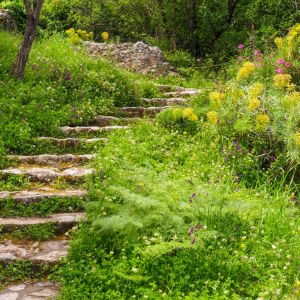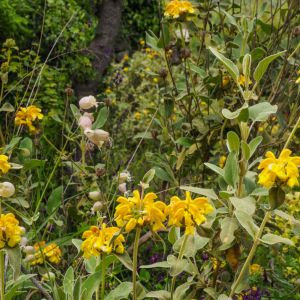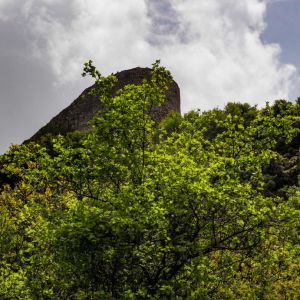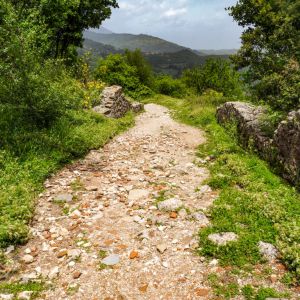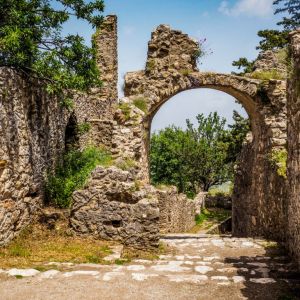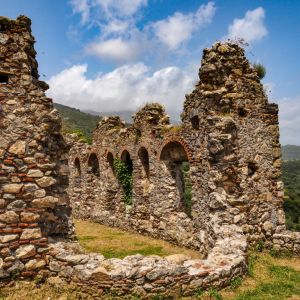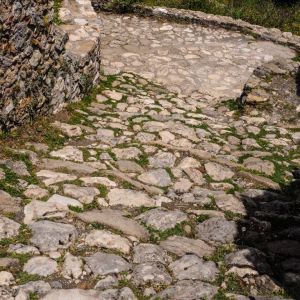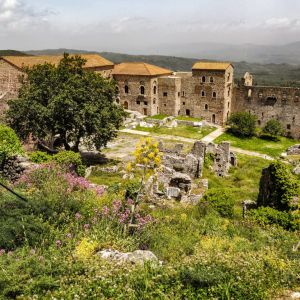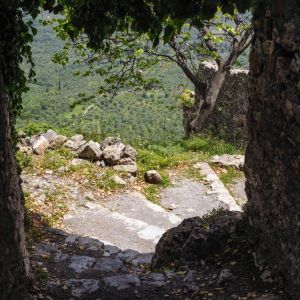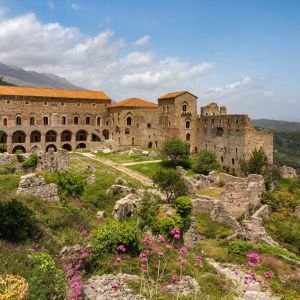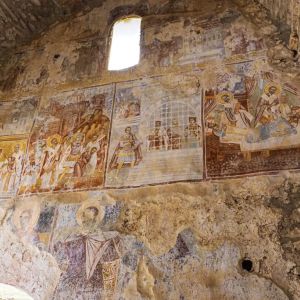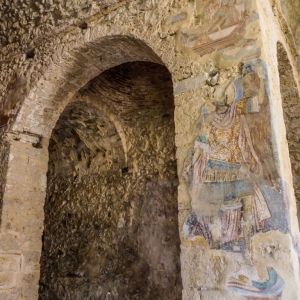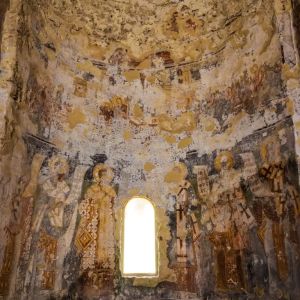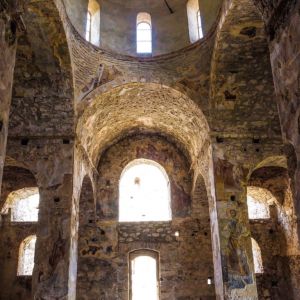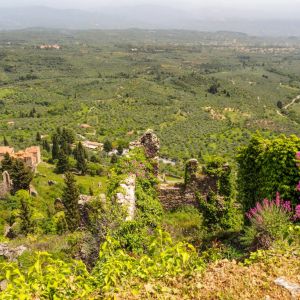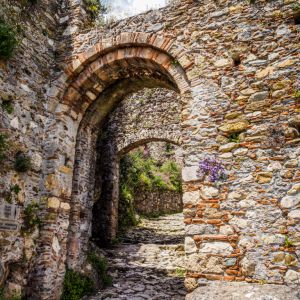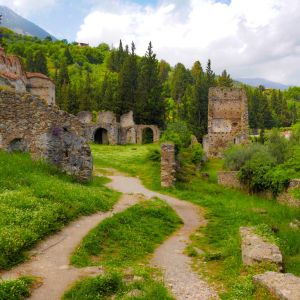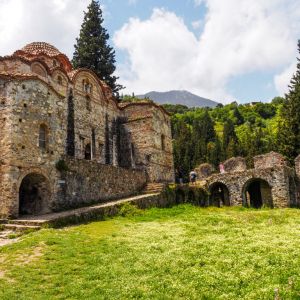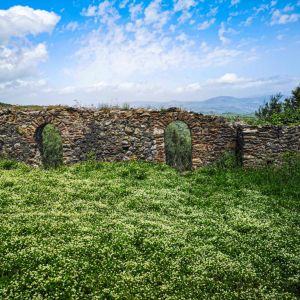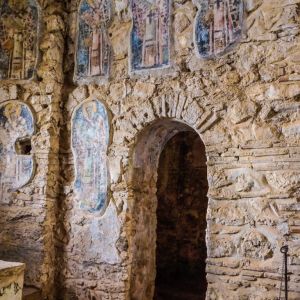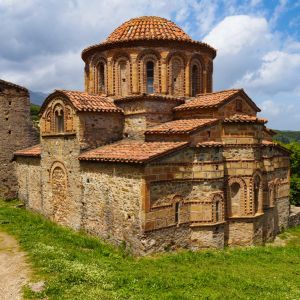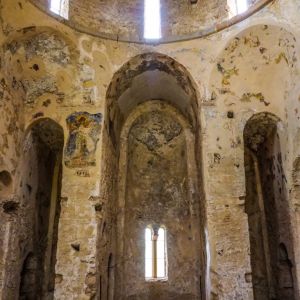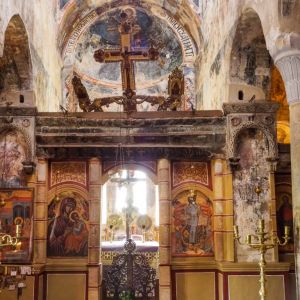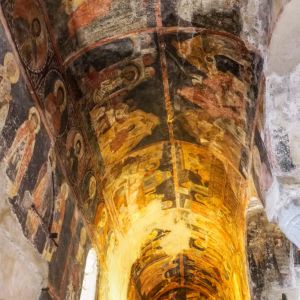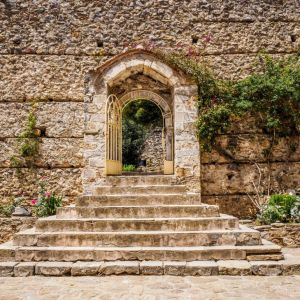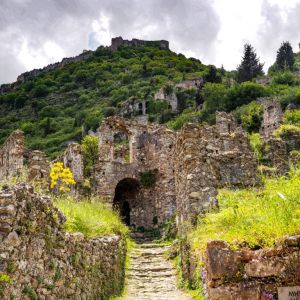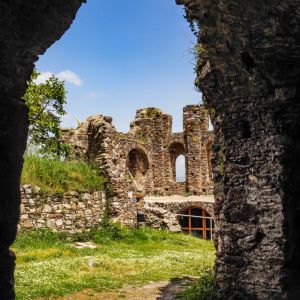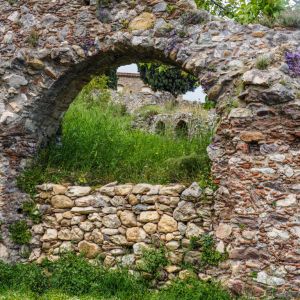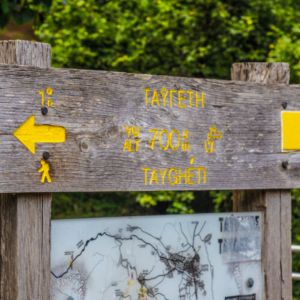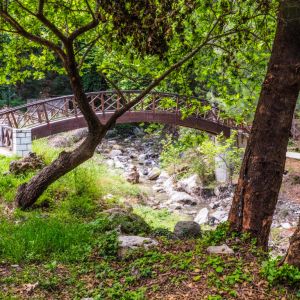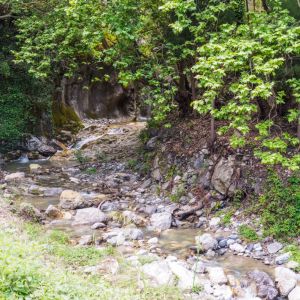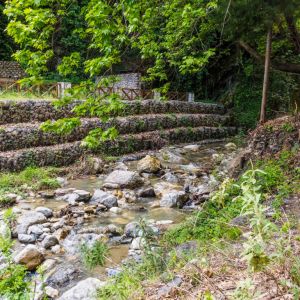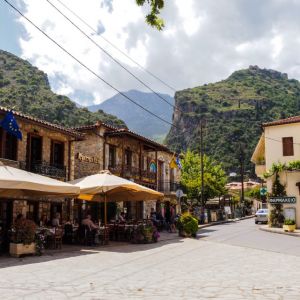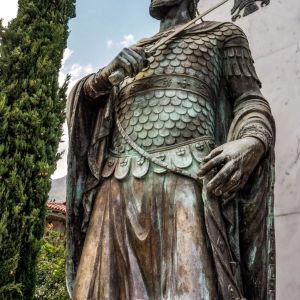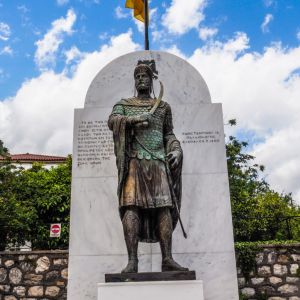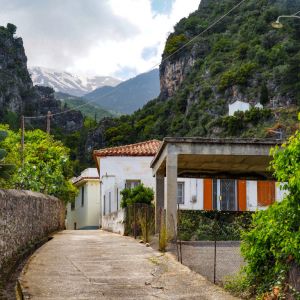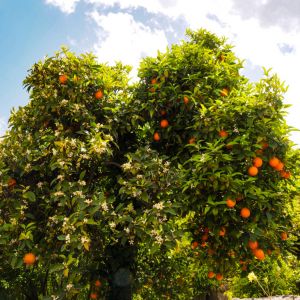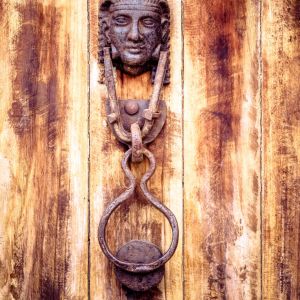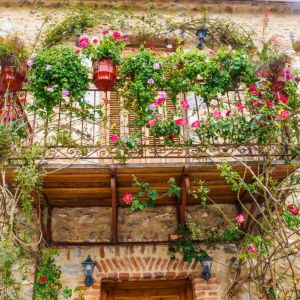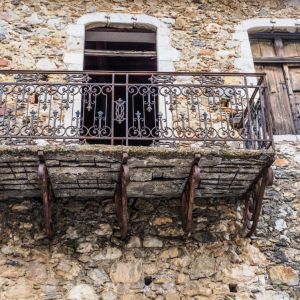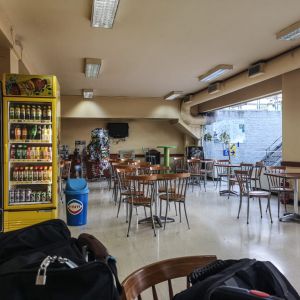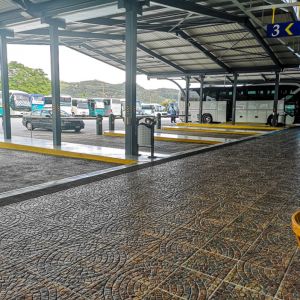More Sparta and a trip to Mystras
After an excellent breakfast at the Lakonia Hotel we head off to the site of Ancient Sparta just 10 minutes walk away. We pass the statue of Leonidio again and walk down a lane past a private school to the entrance of Ancient Sparta. The main gate is locked but upon further investigation we see the side gate is open – it isn’t manned but we walk straight through.
The site is small but well signposted. There are good paths that lead you to each section which are shaded by olive trees.
We notice that coach parties arriving in Sparta make a stop at Leonidio’s statue but don’t venture further to Ancient Sparta. I assume their main stop is at Mystras. This is a shame because although it’s small, it show you the vantage point from which the Ancient Spartans would survey their city. From the acropolis above the ancient theatre you get views across modern Sparta to the Teygettus mountain range. I think it’s quite spectacular.
The Museum of the Olive and Greek Olive Oil is about a 10 minute walk away at the other end of the town. It had been recommended to me so of all the museums we have the option to see we choose this one. It is housed on the site of the old Sparta Electric Company. The fit out of the museum is very well done. It flows intuitively and the exhibits are really interesting to see. Some of the exhibits dedicated to olive oil production including olive presses dating back to prehistoric times are located on the ground floor and further in an outdoor courtyard.
The museum walks the visitor through the history of the olive and olive oil and how it impacted on Greece economically and how it was used in ancient customs and traditions. It shows how this versatile fruit was used in soap making, how the oil was used for bathing rituals, medicinally and of course nutritionally. A highly recommended museum.
We now head over to Mystras – our final visit of our trip to Sparta. I already know that 24 hours is not long enough to really experience this town.
The receptionist at our hotel told us that the best way to see Mystras is to catch a taxi outside the hotel and ask it to take us to the top of the complex – it costs about 13€ one way. She told us that it would take about 2 hours to walk down. We do exactly that. It is easy to pick up a taxi outside the Laconia Hotel and once at the entrance to Mystras we purchase our tickets which are 12€ each. We are given a map which is written in Greek and the lady in the ticket office circles the buildings of importance and crosses the ones that are undergoing renovation.
The first option is to walk up to the Kastro. I must admit, I start the climb but then get distracted by photographing the flora sprouting out of the ancient rocks. Peter continues upwards and I tell him to catch me up later. I begin the descent down. Some parts of the path are full of loose stone but I manage to make it in my Birkenstock sliders. However, I would recommend better footwear if visiting.
You really get the sense of being connected to the mountain – the snowy high peaks looming above us. The views are just out of this world. As soon as you walk through the archway just past the ticket office you can see the agricultural plains of the Evrotas valley down below. Olive and orange orchards stretch as far as the eye can see.
The first church you come to is the cross in square domed church Hagia Sofia said to have been founded in the 14th century and said to have served as a palace church. A bit further down a large building dominates – the Despots Palace. This was built over a period of time between 1250 and 1400 – started by the Franks and finished by the Byzantines.
Just East of Palace of Despots is the Church of Agios Nikolaos. Inside, the central apse is decorated with beautiful iconography that still shows its brilliant colours today.
A painting on one of the piers of the Archangel Michael is decorated with many protective eyes.
Just a bit to the East of Agios Nikolaos is the Convent of Pantanassa.
Number 8 on the map is the Gate of Monemvasia which takes you from the Upper town to the top of the Lower town of Mystras.
Once through the gate you will see the church of Agios Theodorio, one of the oldest and largest churches in Mystras. The church was built between 1290-1295 by monks. The frescoes are very impressive. Next to Agios Theodoros is the church of Odigitria also known as Afentiko. Nearing the bottom of Mystras town is the Church of Evangelistria.
From the museum and public conveniences we find a little path that takes us onto the main road. There are several taverna’s at the bottom but all seem quite busy with coach tours so we continue to walk along the road to the village.
In my usual lackadaisical way I’m wandering across the road in awe of the mountains above us and not really looking where I am going. A car comes around the bend and has to break hard so it doesn’t hit me. The driver of the car – a young man – instead of calling me a M*****a winds his window down and tells us that if we take the path to our right it will take us to a waterfall! How can you begin to love Greece any more!
I thank him and we do indeed take the path to the waterfall which is also the beginning of one of the walking trails to the Teygettus mountains.
The waterfall is small but the shade from the trees does give us some respite from the heat.
Once down into Mystras village we stop at a taverna for a drink and some ice cream. The village square is centred around an ancient tree who’s branches offer shade.
Upon entering Mystras you can’t fail to spot the statue of Constantine Paleologos, the last Byzantine Emperor. He had led a small army of 7000 against the Ottomans who outnumbered them ten fold to defend the city of Constantinople. He was killed during the onslaught but his bravery is said to have been the rallying cry for Greeks to rise up and fight for their independence from the Turks.
Mystras village has lots of charm. Again the smell of orange blossom wafts up our nostrils at every turn. Definitely worth spending an hour or so here.
After a walk around the village we return to the taverna to ask if they will call a taxi for us as we can’t see any passing to hail. One arrives shortly after and we return to the hotel to collect our luggage.
Sparta deserves a much longer stay than 24 hours but I’m surprised at how much we’ve managed to pack into the stay. Everywhere is really compact and again shows that it can be done using public transport and a little bit of taxi!
We walk to Sparta bus station that lies on the outskirts of the town. It is a nice modern bus station and makes for a pleasant wait. We are now heading for Gythio in the Eastern Mani but we are intrigued as to why there are images of George Best on one of the coaches in the bus station. He is a hero where I come from but maybe it will remain a mystery as to why he has been used to decorate a vehicle belonging to the Laconia KTEL bus service!

